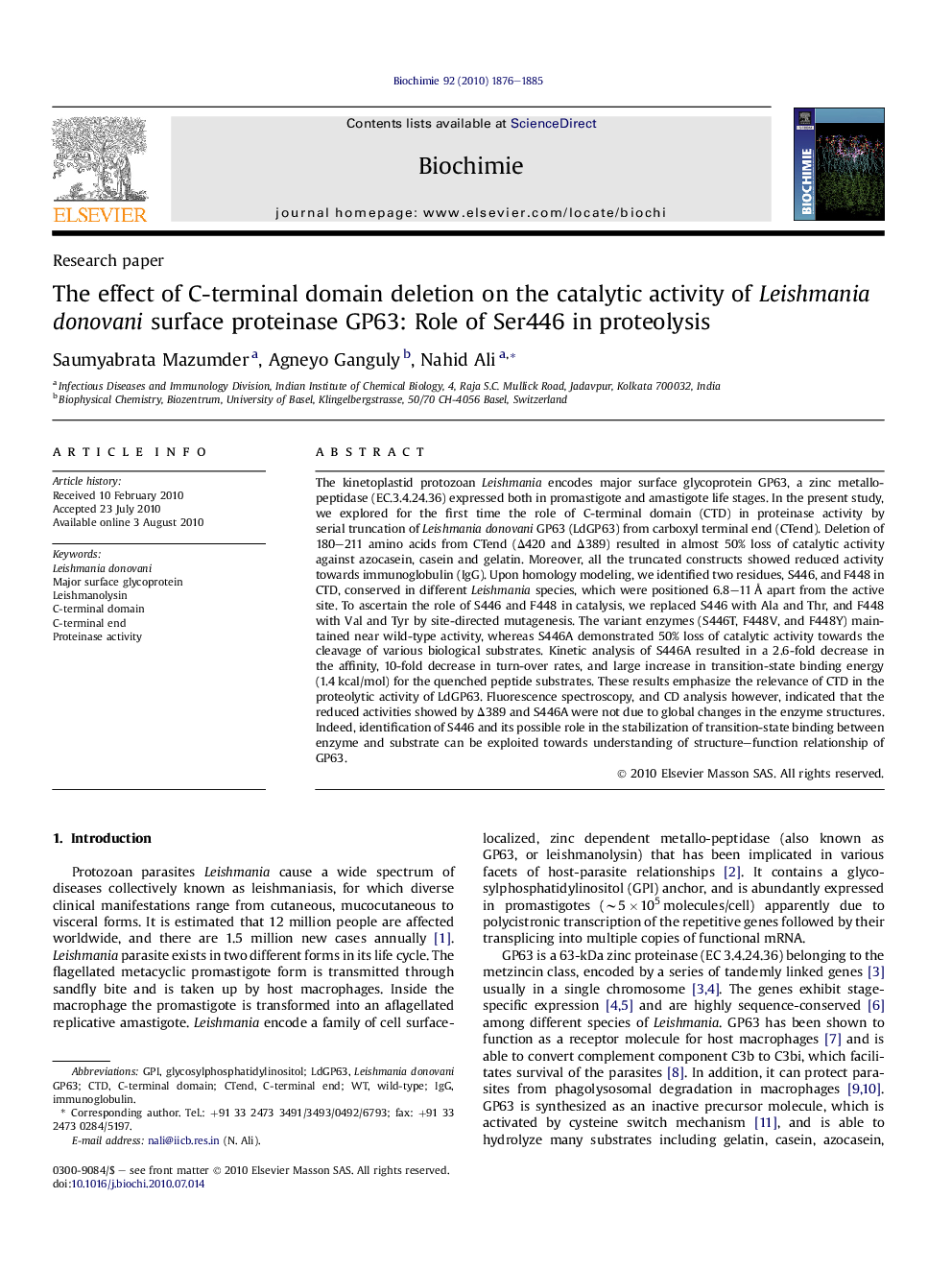| Article ID | Journal | Published Year | Pages | File Type |
|---|---|---|---|---|
| 1952461 | Biochimie | 2010 | 10 Pages |
The kinetoplastid protozoan Leishmania encodes major surface glycoprotein GP63, a zinc metallo-peptidase (EC.3.4.24.36) expressed both in promastigote and amastigote life stages. In the present study, we explored for the first time the role of C-terminal domain (CTD) in proteinase activity by serial truncation of Leishmania donovani GP63 (LdGP63) from carboxyl terminal end (CTend). Deletion of 180–211 amino acids from CTend (Δ420 and Δ389) resulted in almost 50% loss of catalytic activity against azocasein, casein and gelatin. Moreover, all the truncated constructs showed reduced activity towards immunoglobulin (IgG). Upon homology modeling, we identified two residues, S446, and F448 in CTD, conserved in different Leishmania species, which were positioned 6.8–11 Å apart from the active site. To ascertain the role of S446 and F448 in catalysis, we replaced S446 with Ala and Thr, and F448 with Val and Tyr by site-directed mutagenesis. The variant enzymes (S446T, F448V, and F448Y) maintained near wild-type activity, whereas S446A demonstrated 50% loss of catalytic activity towards the cleavage of various biological substrates. Kinetic analysis of S446A resulted in a 2.6-fold decrease in the affinity, 10-fold decrease in turn-over rates, and large increase in transition-state binding energy (1.4 kcal/mol) for the quenched peptide substrates. These results emphasize the relevance of CTD in the proteolytic activity of LdGP63. Fluorescence spectroscopy, and CD analysis however, indicated that the reduced activities showed by Δ389 and S446A were not due to global changes in the enzyme structures. Indeed, identification of S446 and its possible role in the stabilization of transition-state binding between enzyme and substrate can be exploited towards understanding of structure–function relationship of GP63.
